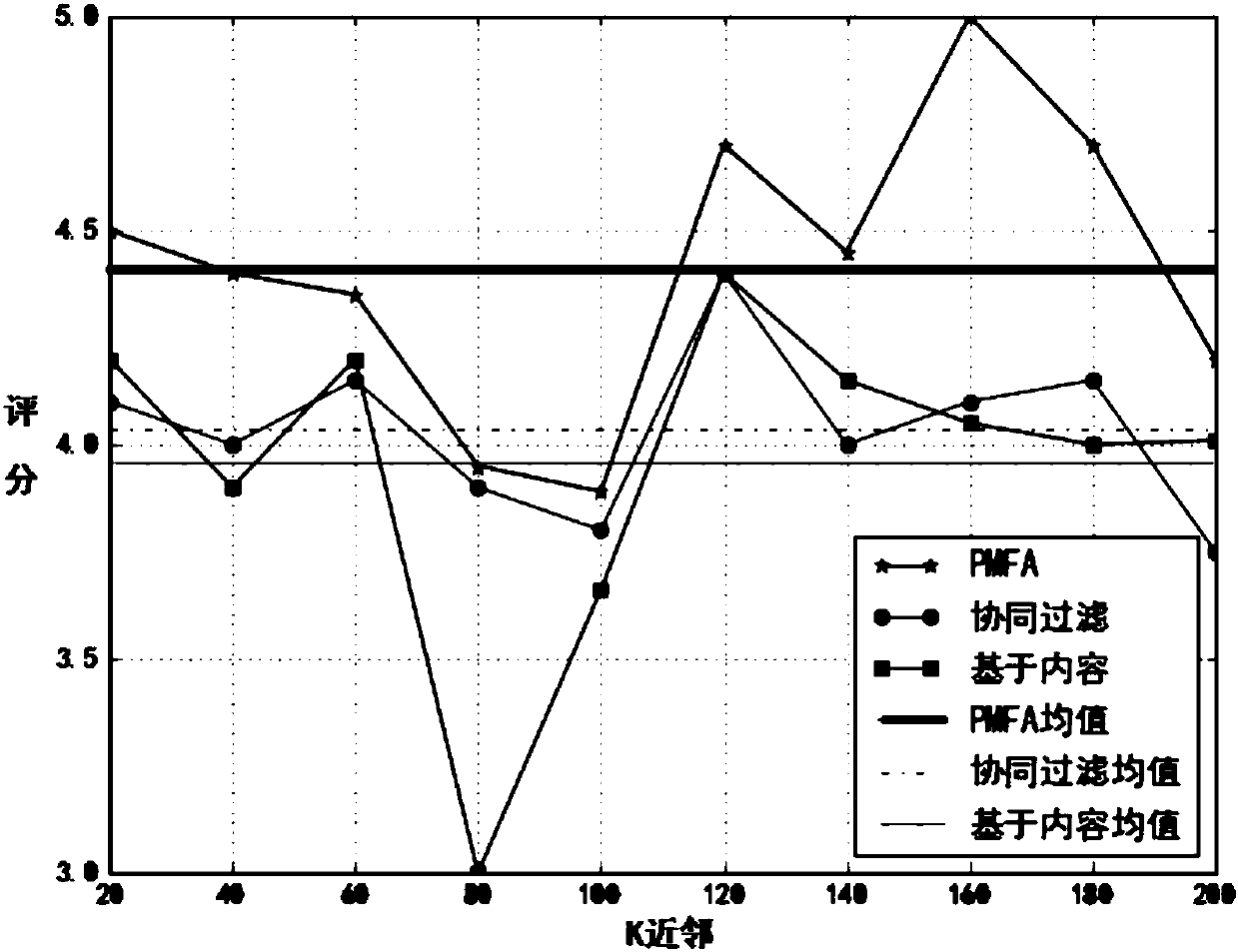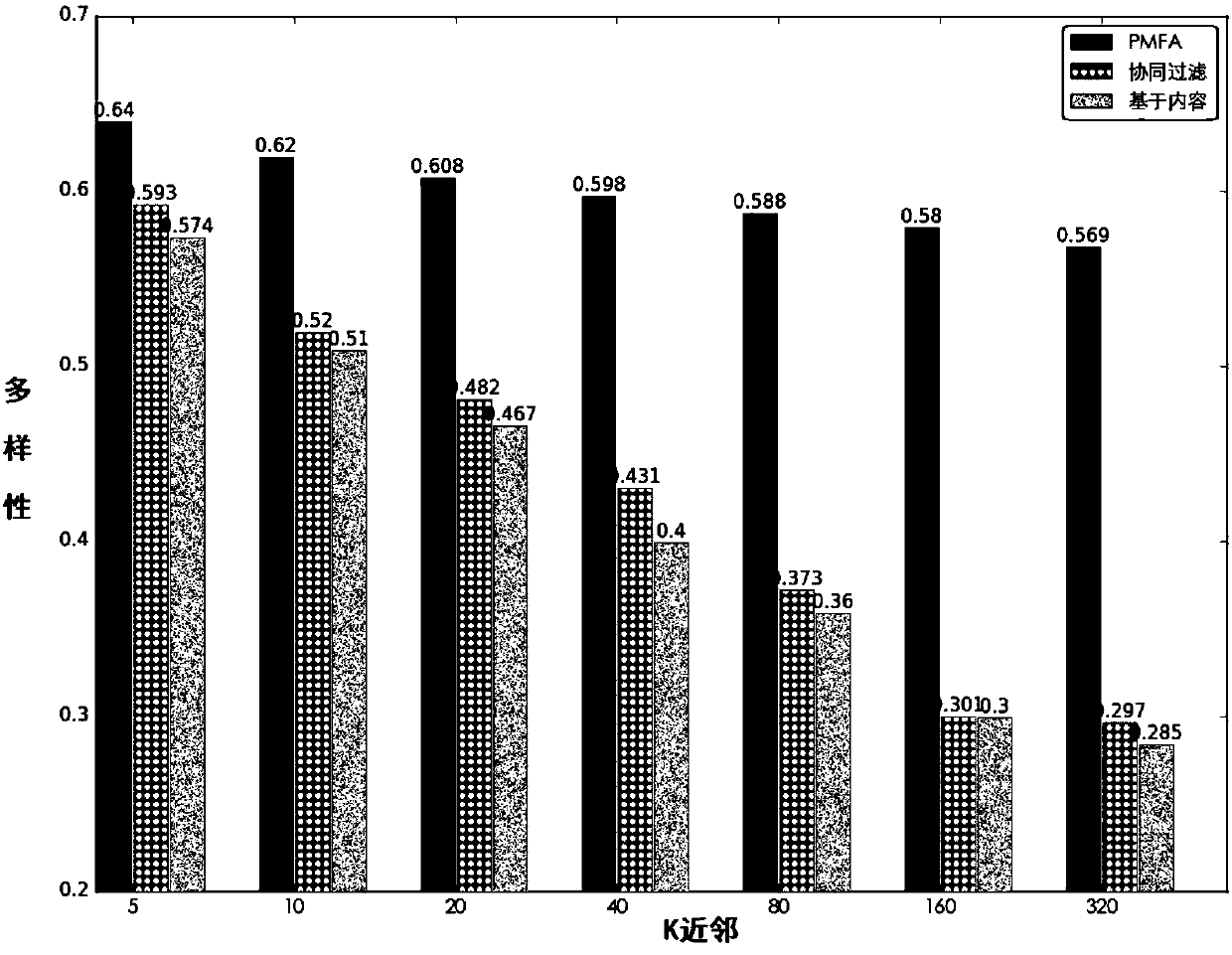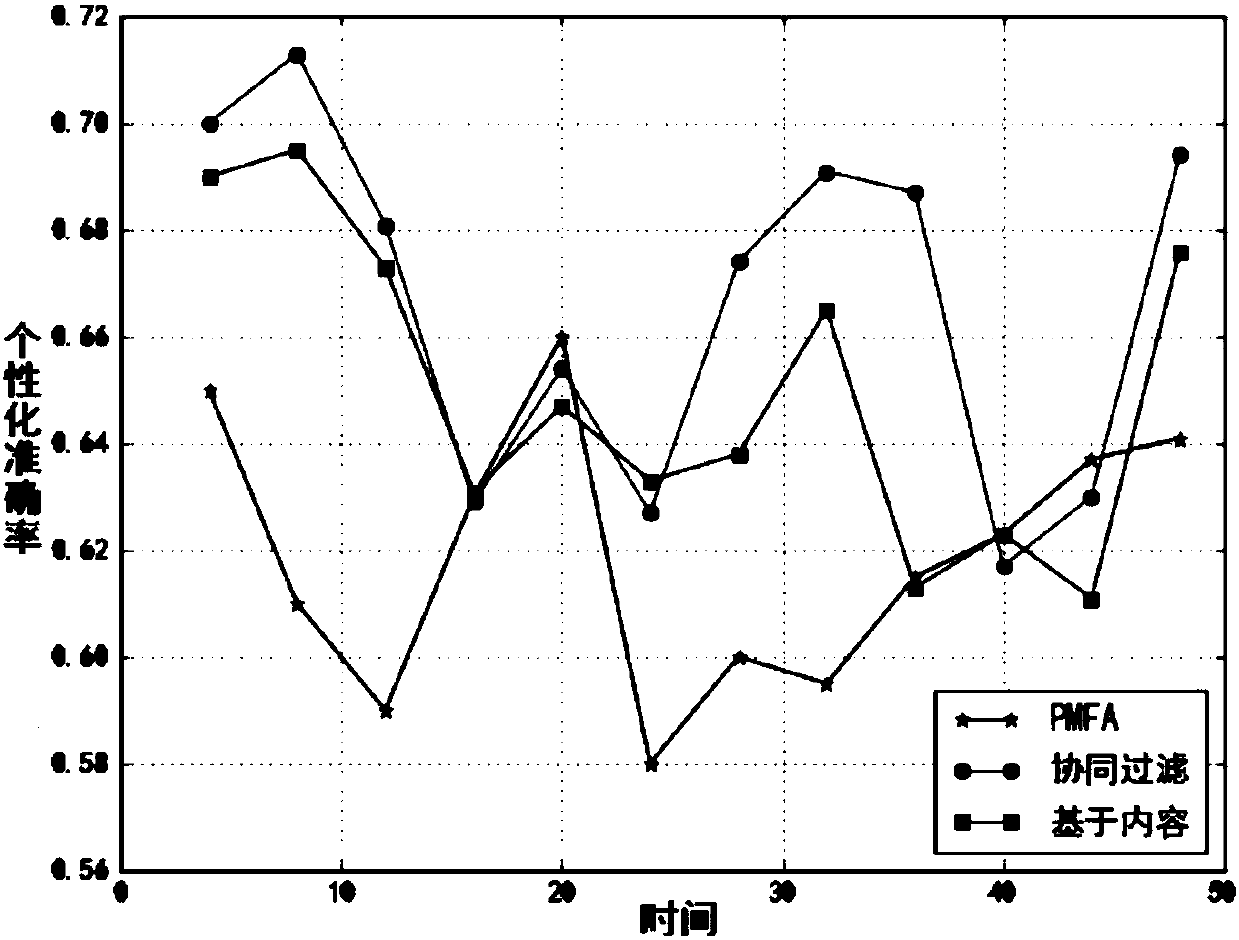Individualized diabetic diet recommendation method by introducing Adaboost probability matrix decomposition
A technology of probability matrix decomposition and recommendation method, which is applied in the field of personalized diet recommendation for diabetes by introducing Adaboost probability matrix decomposition, can solve problems such as ignoring dietary preference characteristics, inability to eat, ignoring patient particularity, etc., and achieves good portability and expansion sexual effect
- Summary
- Abstract
- Description
- Claims
- Application Information
AI Technical Summary
Problems solved by technology
Method used
Image
Examples
Embodiment
[0041] The recommended method of the present invention specifically comprises the following steps:
[0042] Step 1. Set the dietary preference feature set of diabetic patients as U={u 1 ,u 2 ,…,u n} and the attribute feature set of food is V={v 1 ,v 2 ,…,v m},As shown in Table 1;
[0043] Table 1 Diabetes patient-food characteristic correlation
[0044]
[0045]
[0046] Among them, there are n rows in the matrix representing n dietary preference characteristics of a diabetic patient, and m columns representing the attribute characteristics of food; assuming that a diabetic patient has acted on a food, the value of r will be distributed in the matrix. , through the calculation of r to determine whether the relationship between diabetic patients and food satisfies both personalization and medical indicators.
[0047] Take the characteristic attributes of an obese diabetic patient: weight (overweight), taste preference (loving sweets), plasma glucose (higher than no...
PUM
 Login to View More
Login to View More Abstract
Description
Claims
Application Information
 Login to View More
Login to View More - R&D
- Intellectual Property
- Life Sciences
- Materials
- Tech Scout
- Unparalleled Data Quality
- Higher Quality Content
- 60% Fewer Hallucinations
Browse by: Latest US Patents, China's latest patents, Technical Efficacy Thesaurus, Application Domain, Technology Topic, Popular Technical Reports.
© 2025 PatSnap. All rights reserved.Legal|Privacy policy|Modern Slavery Act Transparency Statement|Sitemap|About US| Contact US: help@patsnap.com



